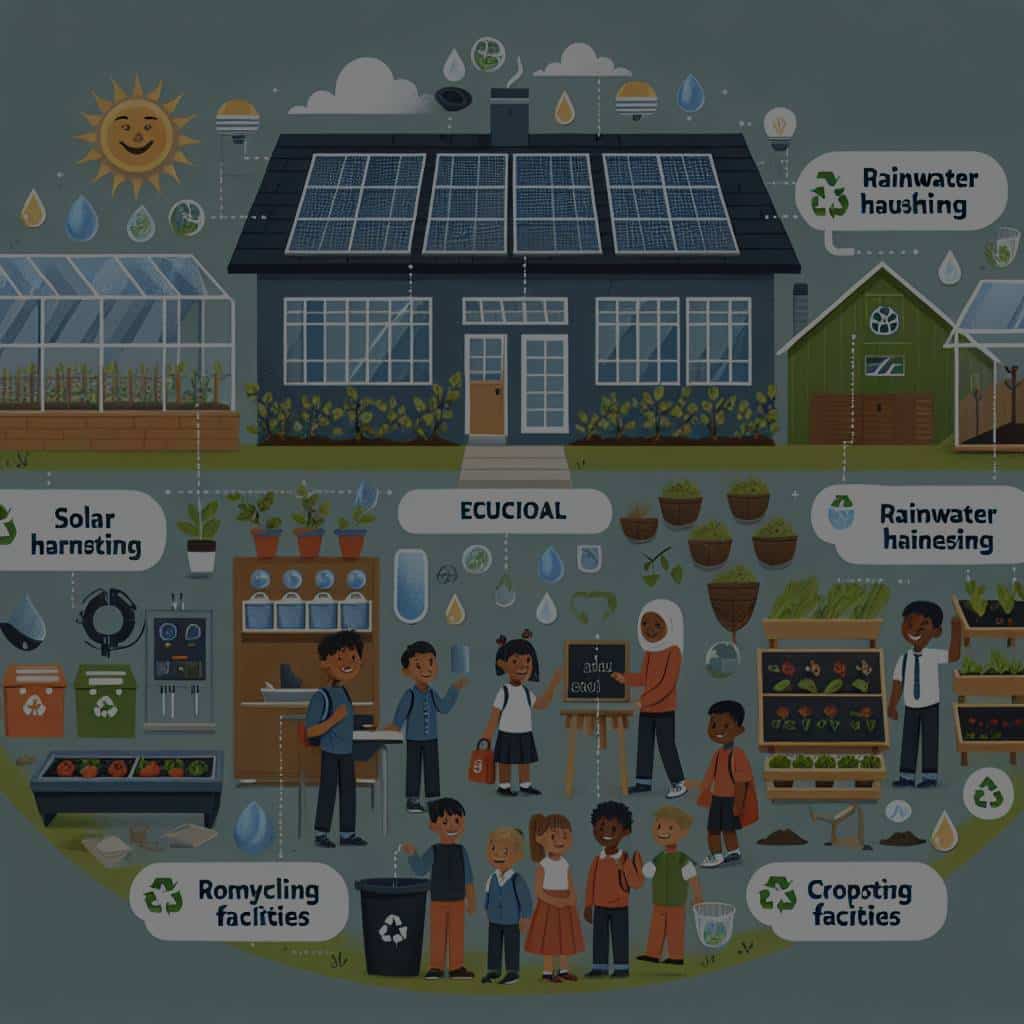What Are the Best Practices for Achieving a Zero-Carbon Footprint in Schools?

The climate crisis is a pressing issue that demands immediate action. Schools, as central institutions in society, have a key role to play in this battle. As such, the focus has shifted towards developing sustainable practices that will enable schools to achieve a zero-carbon footprint. This involves the transition to energy-efficient school buildings, adopting renewable energy resources, and educating students on sustainability. The following sections will discuss in depth the best practices to implement these changes effectively in schools.
The Benefits of Energy-Efficient School Buildings
School buildings require significant energy for heating, lighting, and powering equipment. Traditional designs often result in high energy consumption, contributing heavily to carbon emissions. However, adopting energy-efficient design principles in school buildings can significantly reduce this footprint.
A lire également : Unlocking the excitement of mystery box wine experiences
Energy-efficient buildings employ various strategies to minimize energy use. This includes using high-performance insulation and windows to reduce heat loss, efficient lighting and cooling systems, and appliances that consume less power. Many of these technologies not only reduce energy consumption but also improve the indoor environmental quality, which can enhance students’ learning conditions.
Furthermore, transitioning to energy-efficient buildings is a financially sound decision. While the initial investment may be higher, energy-efficient buildings often result in significant cost savings in the long run due to reduced energy bills.
Lire également : Essential centos patching practices for admins
Adopting Renewable Energy Resources
Another significant step towards achieving a zero-carbon footprint in schools involves the adoption of renewable energy resources. Many schools are now investing in renewable energy systems such as solar panels and wind turbines to generate their own power.
Renewable energy resources are a sustainable and reliable solution to reduce greenhouse gas emissions. Solar panels, for instance, can be installed on rooftops or unused land areas around the school. They not only provide a clean energy source but also serve as a practical learning tool for students to understand renewable energy concepts.
Schools can also consider joining a renewable energy purchasing agreement, which allows multiple institutions to purchase renewable energy from a shared source. This can be a cost-effective way of transitioning to renewable energy, especially for smaller schools.
Educating Students on Sustainability
Education plays a fundamental role in achieving a zero-carbon footprint in schools. By integrating the principles of sustainability into the curriculum, schools can foster a culture of environmental responsibility among students, encouraging them to adopt sustainable practices in their daily lives.
Several strategies can be employed to help students understand the importance of sustainability. This could involve hands-on projects such as maintaining a school garden, recycling programs, or energy conservation initiatives. Encouraging students to participate in these activities not only fosters a sense of responsibility but also enables them to see the tangible impact of their actions.
Also, including sustainability topics in the curriculum can further enhance students’ understanding of the link between human actions and their environmental consequences. This creates a generation of environmentally conscious citizens, equipped with the knowledge and skills to promote sustainability in their future careers and personal lives.
Partnering With The Local Community
Schools do not exist in isolation. They are part of a larger community which can also contribute to the sustainability efforts. By partnering with local businesses, government agencies, and other organizations, schools can further reduce their carbon footprint.
For instance, schools can collaborate with local farmers to source fresh, seasonal, and locally grown food for their meal programs. This not only reduces the carbon emissions associated with transporting food over long distances but also supports local economies.
Similarly, schools can work with local government agencies to advocate for policies that support renewable energy, waste reduction, and other sustainability initiatives. By doing so, they can extend their impact beyond the school boundaries, contributing to broader societal change.
Continual Monitoring and Improvement
Achieving a zero-carbon footprint is not a one-time action but a continuous process of monitoring and improvement. Schools need to regularly assess their energy consumption, waste generation, and other sustainability indicators to identify areas for improvement.
Investing in energy performance monitoring systems can provide real-time data on energy consumption, enabling schools to identify wasteful practices and take corrective actions. Regular audits of waste management systems can also help schools identify opportunities to reduce, reuse, and recycle waste.
In summary, achieving a zero-carbon footprint in schools is a multi-faceted process that requires a holistic approach. It involves transitioning to energy-efficient buildings, adopting renewable energy resources, educating students on sustainability, partnering with the local community, and continually monitoring and improving sustainability performance. By adopting these practices, schools can play a critical role in combating climate change and preserving the planet for future generations.
Upgrading School Transportation Systems
Transportation is another vital area schools need to consider when aiming for a zero-carbon footprint. School buses, field trips, and daily commuting by staff and students contribute considerably to the carbon emissions of a school. To counter this, schools can adopt several strategies to make transportation more energy-efficient and reduce carbon emissions.
Firstly, schools can consider shifting to electric school buses. Unlike traditional diesel-fueled buses, electric buses have zero tailpipe emissions, thereby significantly reducing greenhouse gas emissions. While the upfront costs of electric buses might be higher, the reduced cost of electricity compared to diesel and lower maintenance costs can offset the initial investment over time.
Carpooling initiatives can also be encouraged among students and staff. This reduces the number of vehicles on the road, leading to lower carbon emissions. Schools can facilitate carpooling by providing online platforms for parents and staff to organize shared rides.
Promoting active commuting like walking or biking is another effective way to reduce carbon emissions. Schools can support this by providing secure bike racks and promoting safe walking and biking routes to and from school.
Embracing a Zero Waste Culture
Waste management is a critical element in achieving a zero-carbon footprint. A large amount of waste generated in schools, from paper to food waste, contributes to greenhouse gas emissions. Embracing a zero waste culture in schools can significantly reduce these emissions.
Zero waste initiatives aim at reducing the amount of waste sent to landfill by adopting the principles of ‘reduce, reuse, recycle.’ Schools can implement these initiatives by introducing recycling bins in classrooms and cafeterias, encouraging students to bring reusable water bottles and lunch containers, and composting organic waste.
Schools can also incorporate waste management into their curriculum, where students learn about the impact of waste on the environment and how they can contribute to waste reduction. This not only reduces waste but also creates a culture of environmental responsibility among students.
In addition, schools can organize regular ‘clean-up’ days, where students, staff, and even parents come together to pick up litter in and around the school. This not only keeps the school clean but also fosters a sense of community and shared responsibility towards the environment.
Conclusion
In conclusion, achieving a zero-carbon footprint in schools is an ambitious yet achievable goal. It calls for a comprehensive approach that encompasses energy-efficient school buildings, renewable energy adoption, sustainability education, community partnerships, transportation upgrades, waste management, and continual monitoring and improvement.
Schools are not just places of learning; they are also crucial agents for climate action. By striving to become carbon neutral, schools can play a significant role in mitigating climate change and inspiring students to become future custodians of our planet.
While the road to zero carbon might seem challenging, the rewards – a healthier environment, cost savings, and students empowered with sustainability knowledge – are worth the effort. So, let’s take the necessary steps today to ensure a sustainable future for our public schools and the generations they serve.
